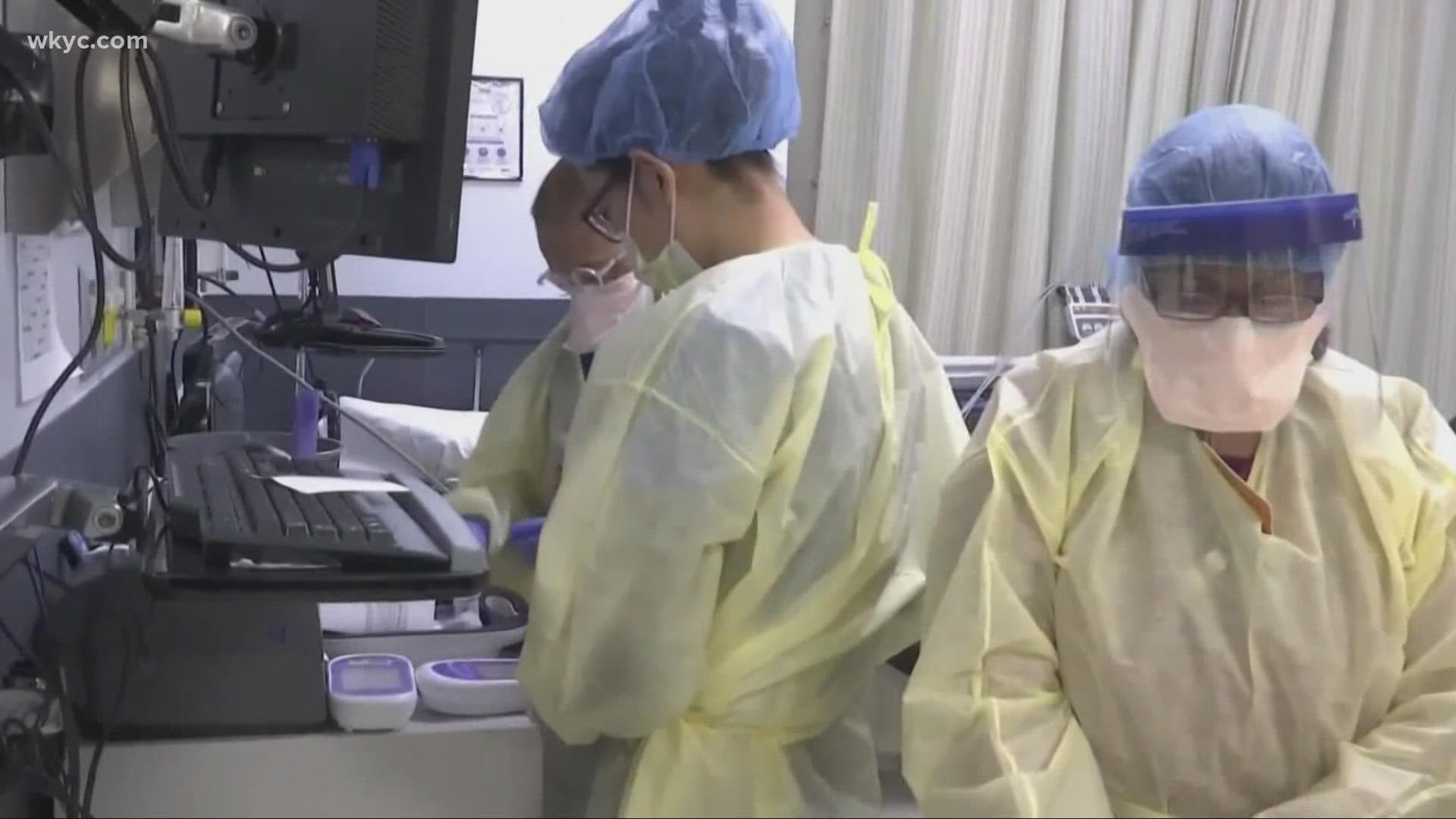CLEVELAND — There is no hospital immune.
Violence against health care workers isn't new; it's just getting worse.
A CDC report from 2018 found 73% of those injured in workplace violence were healthcare workers. In 2020, OSHA found one in five nurses reported being physically assaulted on the job.
"We've encouraged reporting," Gordon Snow, Cleveland Clinic's director of global security operations, told 3News. "We've made it a lot easier for all the caregivers here, and the workplace violence committees are really going out preaching zero tolerance, that it isn't something that you have to endure as a caregiver here."
RELATED: More health coverage from 3News
Complaints include verbal, emotional, or physical altercations against staff. In 2018, there were 854 incidents across Cleveland Clinic's hospital system. Fast-forward to 2020, and the number jumped to 1,407. Already this year, there were 1,200 reports by Aug. 15.
However, total workplace violence incidents that resulted in injury and were reported to OSHA totaled 90 in 2018, 85 in 2019, and 139 in 2020.
They're not alone: MetroHealth reported eight cases that resulted in criminal charges in 2018, 13 in 2019 and 18 in 2020. So far, they report seven cases this year. University Hospitals declined to give numbers, but acknowledged the problem.
"The safety and wellbeing of our University Hospitals caregivers is always a top priority and we continue to enhance our safety measures," the organization said in a statement.
All have instituted additional measures that include metal detectors in emergency rooms, added physical and wearable panic buttons for staff, training in crisis management techniques including de-escalation and beefed up security.
"In the last three or four years, we've put a 24/7 police presence in the emergency rooms," Snow said.
There are a myriad of reasons for the spike, including pandemic visitor restrictions, the stress of bad news and an overall stressful environment. But attacking a health care worker is never part of the prescription, and zero tolerance is the diagnosis.
"The people that are working here are trying to provide the best medical care in the world, and they're trying to make you as safe as possible," Snow stated. "[Patients] really need to treat everybody with the appropriate care and respect that they demand. If they thought of this more as, you know, coming to their own home, I think would make it a much better environment for all concerned."
Here are some of the statistics and statements we received from all of Northeast Ohio's major hospital systems:
University Hospitals
"The global pandemic has placed everyone under a great deal of stress, and hospitals across the country have seen an increase in violence directed at caregivers.
"The safety and wellbeing of our University Hospitals caregivers is always a top priority and we continue to enhance our safety measures which include:
- Deploying medical detectors within emergency departments to prevent weapons entering the facility.
- Expansion of physical panic buttons and system-wide deployment of a personal safety app which allows every employee to summon UH or local police in the event of an emergency.
- Education and training for our caregivers – CPI (Crisis Prevention Institute) Training
- Increases to UH Police and Protective Services staffing
"Hospitals continue to see incredibly high demand and our caregivers have worked tirelessly to accommodate this. We would ask everyone coming to our facilities to be patient and understanding as we deliver their care."
Cleveland Clinic
Workplace violence events reported (verbal, emotional, or physical)
- 2016: 587
- 2017: 609
- 2018: 854
- 2019: 855
- 2020: 1,407 (expanded reporting, increase in incidents and volume of reporting)
- 2021: (as of Aug. 15): 1,200
Total workplace violence incidents resulting in injury and reported to OSHA
- 2016: 37
- 2017: 72
- 2018: 90
- 2019: 85
- 2020: 139
Impact of pandemic on workplace safety
"There has been an increased number of incidents throughout the pandemic, likely due to masking mandates and restricted visitation."
Workplace violence prevention strategies
"Healthcare workers are four times more likely to suffer from workplace violence than those in other industries. Cleveland Clinic's key prevention strategies include:
- Expanded police officer presence and visibility. Cleveland Clinic now has police officer presence in every ED location.
- Improved weapons screening with walk-through and hand-held (wand) metal detectors/magnetometers. Walk-through metal detectors were installed at the entrance of every ED and patients or visitors who arrive at an ED via ambulance are now screened for weapons with hand-held magnetometers.
- Updated panic alarms. Four types of panic alarms across EDs were consolidated into one gold standard alarm/panic button. The update also included a standardized alarm location labeling system.
- Required training for caregivers. ED caregivers were required to complete annual Welle (previously NAPPI) violence protection training.
- Enhanced basic crime prevention. Expanded caregiver communication with ongoing tips and recommendations for basic crime prevention, such as removing purses, clothing (jackets/coats) and other personal belongings from desks or other areas accessible by patients or visitors.
- Implemented caregiver escort program. Ensures caregivers have access to an escort (24/7) when coming to and from work.
MetroHealth
The following are the number of criminal assaults on MetroHealth employees that resulted in charges filed by the MetroHealth Police Department for criminal prosecution.
- 2016: 7
- 2017: 11
- 2018: 8
- 2019: 13
- 2020: 18
- 2021: 7

